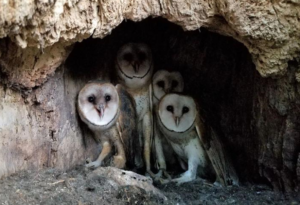By Steve Richter, Director of agriculture strategies, The Nature Conservancy
A recent story on the front page of the Wisconsin State Journal featured the happy reunion of a young owl and its family after it fell out of its nest. This was the first sighting of a barn owl in Wisconsin in over 20 years. The story got me excited about my annual participation in the Christmas Bird Count, where I will identify every bird I see on Jan. 2. These bird counts are done across the world, as citizens like you and I are assigned a count territory to drive and walk.

Counts have been taking place every year for over 100 years. It’s one of the best examples of citizens pooling their observations together to help identify trends in population status. Today, in Wisconsin alone, citizens can take part in a Sandhill crane count, a frog and toad survey, or a Loon watch, to name just a few of the possibilities.
The same kind of citizen activism is taking place in farmer-led groups. Farmers use incentive funds to try new practices and share observations at field days or sit on a panel at winter meetings. The Natural Resources Conservation Service has created demonstration farm networks across the eastern half of Wisconsin, another example of farmers sharing their findings. Farmers have always been citizen scientists, trying out many new practices and products in their fields and barns.
For the seventh straight year, The Nature Conservancy will offer incentive funds to farmer-led groups in 2022, encouraging farmers to try new practices. Additionally, we’ll encourage each group to have field days, take advantage of social media, and utilize newsletters as a platform for farmers to share their stories with neighboring farmers.
Members of farmer-led groups do some of our nation’s most important environmental work. Now, I am off to do my part for nature with binoculars in hand to count chickadees and juncos!
